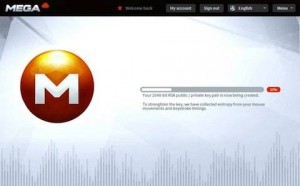 While the world’s online sharing community is excited about Kim Dotcom’s bold new venture, the file-storage and sharing service Mega, it is already drawing criticism from security researchers, who advise not to trust it.
While the world’s online sharing community is excited about Kim Dotcom’s bold new venture, the file-storage and sharing service Mega, it is already drawing criticism from security researchers, who advise not to trust it.
The advice is based on how the site protects users’ data, analysts say.
Dotcom threw a large launch party for Mega on Sunday at his mansion outside of Auckland, New Zealand. The service is the successor to Megaupload, the file-sharing site that Dotcom and his colleagues were indicted for in the U.S. in January 2012 on copyright infringement charges.
The flamboyant Dotcom is assuring Mega’s users that the site’s encryption will protect their privacy and data, but the implementation of that encryption scheme is fundamentally flawed, observers say.
Mega uses SSL (Secure Sockets Layer), a widely used protocol for encryption across the internet for securing the connection between its users’ computers and its own servers. Once an SSL connection is made, Mega pushes JavaScript code to a person’s browser, which then encrypts the person’s files before the data is sent to Mega’s servers.
The problem is that SSL has long been recognised as a weak point on the web. In 2009, security researcher Moxie Marlinspike created a tool called SSLstrip, which allows an attacker to intercept and stop an SSL connection. The attacker can then spy on whatever data the user sends to the fake website.
Since Mega fundamentally relies on SSL, “there is really no reason to be doing client-side encryption,” Marlinspike said in an interview on Monday. “These kinds of schemes are vulnerable to all of the problems with SSL.”
Someone who attacks Mega using SSLstrip could then send their own custom malicious JavaScript to the victim’s browser. The user would inevitably divulge his password, which would allow the attacker to decrypt all his data stored with Mega.
If Mega’s servers were compromised, it would also be possible for an attacker to deliver modified, malicious JavaScript, said Nadim Kobeissi, developer of the encrypted instant messaging program Cryptocat.
“Every time you open the website, the encryption code is sent from scratch,” Kobeissi said “So if one day I decide I want to disable all encryption for you, I can just serve your username different code that doesn’t encrypt anything and instead steals your encryption keys.”
A safer way would be for Mega to use a signed browser extension to encrypt the data, which would prevent tampering by an attacker, Marlinspike said. Alternatively, an installed software client would accomplish the same end, he said, without exposing a user to the insecurities of SSL.
Marlinspike said that he thinks Mega users fundamentally don’t care that much about security, since they’re just interested in file sharing. Since Mega will just see encrypted data on their servers, the set-up appears to absolve the site’s founders from the copyright infringement issues of Megaupload.
“All that matters is the operators of Mega can claim they don’t have the technical ability to inspect the contents on the server for copyright infringement,” Marlinspike said.
Like any new online service, Mega’s code is already being prodded. On Sunday, it was revealed the site had a cross-site scripting flaw, which, in some cases, can allow an attacker to steal a user’s cookies, which would allow at least a temporary takeover of a victim’s account. It was quickly fixed.
“XSS issue was resolved within the hour,” wrote Bram van der Kolk, one of the founders of Mega and Megaupload, on Twitter on Sunday. “Very valid point, embarrassing bug.”





